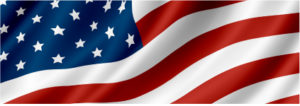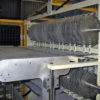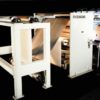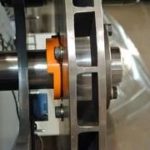I’m having trouble running 0.024” (400 gsm) thick board on my stationary bed knife cutter. The leading edge has a lip or “bead” on it and the trailing edge is fuzzy. What can I do to fix this problem?
Both problems are caused by material flow through the knife area and knife cut angles. There are a few areas you can look at to solve this problem.
The first thing to try is repositioning the doctor boards before the bed knife to give it more of a “water fall” effect or steeper approach angle into the cut point.
The second thing to reexamine the knife angles. The upper and lower cross cutting blades’ angles should match the flow of the web so as not to contact the board until at the point of cut.
The third thing to determine if “blocking” is occurring. “Blocking” is the phenomena that occurs when the sheet length is longer than the circumference of the the knife revolver. Under such circumstances, the speed of the fly knife on a stationary bed cutter is traveling slower than the speed of the web at the time of cut. Under such conditions, the trailing edge of the sheet is being pulled away from the cutting action, which is tantamount to tearing the sheet away. Running at reduced speed minimizes the poor cut quality on the trailing edge. Changing the shear in the cutter or installing a larger knife cylinder are other, more extensive solutions.
The last area to look at is the tape take away pinch rolls, make sure the pinch is enough to pull the web taught while it is being cut but not so tight as to tear the web as it is being cut.






